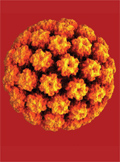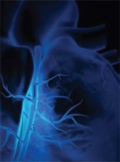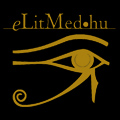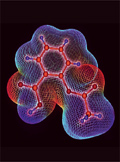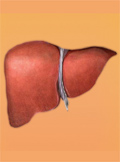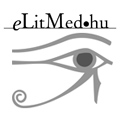The eLitMed.hu medical portal uses computer cookies for convenient operation. Detailed information can be found in the Cookie-policy.
Lege Artis Medicinae - 2010;20(02)
Content
[Dangers of the use of performance enhancement drugs and food supplements]
[The history of humankind is full of stories related to performance enhancement drug abuse. For the purpose of improving explosive power and long-term physical performance central nervous system stimulating drugs and supplements, such as: amphetamine and cocaine have been used. Androgenic anabolic steroids are used for increasing skeletal muscle mass. The abuse of performance enhancer drugs is seriously deteriorating the human health, and have several negative side effects. Number of food-supplements - available in the market, often contain traces of steroids. So called designer steroids are extremely dangerous. In the near future it will be possible to enhance physical performance through genetic interventions.]
[The relationship between human papilloma virus and cervical cancer]
[Worldwide, cervical cancer remains the second most frequent malignancy. The estimated number of new cases is 450,000 per year. Approximately 80% of affected women live in developing countries where access to cervical screening programmes is limited. In Europe, more than 12,800 women die each year from this preventable disease. Human papilloma virus (HPV) infection has been proved to be a potential cause of cervical cancer. Secondary screening decreases the morbidity and mortality of the disease, but does not prevent HPV infection. HPV-DNA can be detected in 90-100% of preinvasive and invasive cervical cancer cases. Trials assessing prophylactic anti-HPV vaccination have confirmed that the vaccination is a suitable method for the primary prevention of precancer lesions and cervical cancer.]
[Heart surgery among octogenerians - fiction or reality?]
[OBJECTIVE - Aging of the society results in important demographic changes in cardiac surgical practice. Controversy exists as to whether heart surgery in elderly patients improves their life expectancy and the severe functional restraint caused by their heart diseases. PATIENTS AND METHODS - We discuss a retrospective study of octogenarian patients who underwent cardiac surgical procedures in our institutions between 01.01.2000. and 30.06.2006. The mean age of the 105 participants was 81.5 years (80-87). 67% (70) of patients had coronary artery disease (CAD). 31% (33) of the patients had aortic valve stenosis (AVR), of whom 16 had isolated AVR and 17 had AVR combined with CAD. One patient had surgery because of mitral valve insufficiency (MVR) only, and one was treated for combined AVR and MVR. The average surgical euroscore was 9.7 (5-18) and the predictive mortalities were 18%. 9.5% of the procedures were acute, 42.9% were urgent and 47.6% were chronic surgeries. RESULTS - The average operating time was 149±23 min, duration of the aortic cross clamp was 65±11 min. OPCAB procedures were performed in 82.9% of patients treated for CAD. In the postoperative period, the occurrence of renal failure was 2.9%, blood transfusions were needed in 37.4% of patients, and neurological deficits occurred in 2.9% of patients. The incidence of perioperative myocardial infarction was 5.6%. The rate of early mortality was 4.8%, the rate of late (>30 days) mortality was 14.3%. At the last follow-up examination, 67 (79%) of the surviving 85 patients were free of cardiac symptoms, physically active and able to take care of themselves. 14 patients (17%) needed some help and only 4 patients (5%) were unable of taking care of themselves. CONCLUSIONS - The mortality of cardiac diseases can be reduced by cardiac surgeries in octagenerians. Improvement of cardiac symptoms improves the patients’ functional status and their quality of life can be similar to that of healthy people of the same age.]
[Switching from human basal insulin to once daily insulin detemir in type 2 diabetic patients treated by basal-bolus regimen - Results from the LEONCET2, an observational, prospective, multicenter study]
[Insulin analogues have been developed in order to overcome some drawbacks of human insulins. Switching from a human insulin-based basal- bolus regimen to once daily detemir could result in improved metabolism and increased safety of the therapy. We assessed the effects of switching from human NPH-insulin to once daily detemir insulin in patients with type 2 diabetes mellitus treated with a basal-bolus insulin regimen. We evaluated the data of 1,474 patients with diabetes (age: 59.1±9.8 years, body weight 89.6±8.6 kg, BMI 31.6±5.4 kg/m2) in an observational, prospective, 24-week, multicenter study. All patients were treated with a basal-bolus regimen consisting of human NPH as basal insulin and a human or analogue insulin as bolus insulin. After enrollment, patients received once daily detemir insulin instead of NPH-insulin, while treatment with bolus insulin was continued. Patients were examined at weeks 12 and 24. By week 24, the mean HbA1c value, irrespective of BMI-categories, decreased significantly (p<0.0001) from 8.63±1.01% by 0.79±0.63%. Fasting blood glucose level decreased from 8.86±1.78 mmol/l to 7.09±1.31 mmol/l; p<0.0001). The target level of HbA1c (<7.0%) was reached by 194 patients (13.1%). The patients’ body weight decreased significantly by week 12 (-0.69±2.00 kg; p<0.0001) and by week 24 (-1.28±2.80 kg; p<0.0001). The changes were more pronounced in higher than in lower BMI-categories (p for trend <0.0001). The mean daily doses of basal insulin were increased from 0.28 IU/kg to 0.33 IU/kg while those of bolus insulins were not changed. The rate of severe hypoglycaemic events decreased significantly (p=0.048) from 2.95 [daytime 1.02, nocturnal 1.93] to 0.06 [daytime 0.04, nocturnal 0.02] episodes/patient-year. In patients with type 2 diabetes mellitus treated with basal-bolus regimen, switching from human basal insulin to once daily insulin detemir results in a significantly improved metabolism, as well as fewer hypoglycaemic events and decreased body weight. Nevertheless, the low rate of patients reaching the glycaemic target implicates that some factors other than an appropriate basal insulin substitution have a role in achieving an optimal metabolic control.]
[The importance of differences between diuretics in the treatment of hypertension - Metabolic neutrality in focus]
[Indapamide is a “second-generation” vasodilatatory thiazide diuretic. Its antihypertensive efficacy when used at a low dose is equivalent to those of the other first-line antihypertensive drugs. Unlike other thiazide diuretics, low-dose indapamide was not found to have any adverse glucose or lipid effects in previous studies, moreover, it decreased insulin resistance in patients with hypertension. The risks of hypokalemia and hyperuricemia were also substantially lower. In the large, randomized, placebo-controlled HYVET-study, low-dose, indapamide-based antihypertensive therapy significantly decreased the risks of cardiovascular diseases and mortality in elderly (age >80 years) patients with hypertension. According to new guidelines, indapamide is preferred to other thiazide diuretics for patients with hypertension associated with metabolic syndrome or diabetes mellitus.]
[Antiplatelet therapy with acetylsalicylic acid - Cardiovascular indications and haemorrhagic complications]
[Acetylsalicylic acid effectively blocks the activation of platelets, and becomes a basic element of antithrombotic therapy of patients with high cardiovascular risk. Decrease of platelet reactivity is due to the irreversible inhibition of COX- 1 isoenzime in platelets during treatment. Choosing the right dose is still not an easy task. Bleeding side effects are frequently seen in patients treated with this drug worldwide. Clinical benefit does not improves with escalated doses (300 mg), however the risk of haemorrhagic events increases. Therefore acetylsalicylic acid dose should be reduced to the effective minimal dose (75-150 mg daily) after the acute phase of atherothrombosis in order to prevent side effects. Effect of acetylsalicylic acid differs individually, it might be important screening out those patients who respond less to the drug. Resistance is still an evolving field, proper methodology is to be determined. Right indications of acetylsalicylic acid needs balance between reaching clinical benefit and avoiding side effects. The Hungarian Cardiovascular Therapeutic Consensus Conference 2009 suggested acetylsalicylic acid in primary prevention for those males only, who have overt cardiovascular risk, and SCORE result is more than 10%, with no gastrointestinal haemorrhage in medical history, and with a well-controlled hypertension. Lifelong aspirin prevention should be used after all diagnosed cardiovascular atherothrombotic event as a cornerstone of secondary prevention with low dose (75-150 mg daily) in both genders.]
[The significance of media literacy in adolescent smoking and drinking]
[INTRODUCTION - Media exerts a strong socialization effect on adolescents who are particularly susceptible to different messages in this life period. In the present study, therefore, we focused on adolescents’ media literacy. METHODS - 546 adolescents from Makó (Southern Hungary) were studied, including 288 (52.7%) grade 8 (age 13-15 years) and 258 (47.3%) grade 12 (age 17-19 years) students; 49.5% of the participants were male and 50.5% female. The survey covered sociodemographic variables, lifetime and monthly prevalence of smoking and drinking, attitudes related to substance use and media literacy. For the study of media literacy, we adapted a Medica Literacy Scale containing 31 items. After performing factor analysis, factors of media literacy were analyzed by two-sample t-tests according to sociodemographic variables and behaviour. RESULTS - Our results show that factors of media literacy are well differentiated according to sociodemographic variables and even more according to smoking and drinking behaviour. Girls and younger adolescents (among who substance use is less frequent) are more likely to notice the hidden messages of substance use that are shown in advertisements and movies, and the representation of the interests of the tobacco and alcohol industry in the media. Nonsmokers and nondrinkers are a lot more aware of the manipulation effects of the media. CONCLUSIONS - Our results draw attention to the significance of media literacy in the prevention of adolescent smoking and drinking.]
1.
Clinical Neuroscience
Is there any difference in mortality rates of atrial fibrillation detected before or after ischemic stroke?2.
Clinical Neuroscience
Factors influencing the level of stigma in Parkinson’s disease in western Turkey3.
Clinical Neuroscience
Neuropathic pain and mood disorders in earthquake survivors with peripheral nerve injuries4.
Journal of Nursing Theory and Practice
[Correlations of Sarcopenia, Frailty, Falls and Social Isolation – A Literature Review in the Light of Swedish Statistics]5.
Clinical Neuroscience
[Comparison of pain intensity measurements among patients with low-back pain]1.
Clinical Neuroscience Proceedings
[A Magyar Stroke Társaság XVIII. Kongresszusa és a Magyar Neuroszonológiai Társaság XV. Konferenciája. Absztraktfüzet]2.
3.
Journal of Nursing Theory and Practice
[A selection of the entries submitted to the literary contest "Honorable mission: the joys and challenges of our profession" ]4.
Journal of Nursing Theory and Practice
[End of Life and Palliative Care of Newborns in the Nursing Context]5.
Journal of Nursing Theory and Practice
[Aspects of Occupational Health Nursing for Incurable Patients ]




